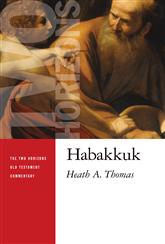Encountering God in the Psalms - A Review
Most books get reviewed when they are first out, generally within two years. Sometimes, there are classics that people will “review” years afterward, but this is generally a way of introducing people to an older book, with little intent to provide feedback to the author for his next work. This review falls more into the latter category than the former, since the author is deceased, but I make no claims that this book is a classic, merely that it is a worthy piece of scholarship that could be helpful to more than have likely encountered it. It is a book that is useful in building up the body of Christ.
Michael Travers’ most important book is a 2003 volume, Encountering God in the Psalms, which he published with Kregel shortly after he arrived at Southeastern Baptist Theological Seminary, though the majority of the volume was authored while he was at Mississippi College. The book is about reading the Psalms. More specifically, it is about reading the Psalms both for their literary quality and their devotional power. It is in this dual purpose, well executed, that gives this book its unique quality and enduring value.
The first part of the book teaches the reader how to read the Psalms. The first three chapter of the book are dedicated to teaching readers about the nature of poetry, the structure of Hebrew poetry, the concepts of theme, genre, and musical quality. While the book is focused on a particular subset of poetry, there is a great deal of general wisdom in these chapters that teach the reader how to read poetry better.
Part Two is longer, consisting of ten chapters that walk the reader through reading select Psalms. The section begins by presenting Moses’ encounter with God as a narrative exemplar that shows the setting that is, to some degree, present for all of the various authors of Psalms. The remaining chapters deal with Psalms that are sorted by theme. Travers moves through Psalms grouped under headings that consider God as creator, covenant maker, Messiah, redeemer, way of wisdom, and other themes. Each chapter shows how the method for reading the Psalms laid out in Part One can be applied to Psalms that fit those themes.
This is a useful book because it is a book that points people toward something beyond itself or the author. In this way, Travers is much like C. S. Lewis. When Lewis wrote he was always trying to get people to see where he was pointing. In this case, Travers is pointing people through his own work toward that Psalms that are, in turn, pointing people toward the Triune God. This is, therefore, just the sort of book that will help people become better Christians.
Michael’s early research was on the devotional poets, especially John Milton. His skill with poetry comes through in this book as he brings readers to a deeper appreciation for the power of language through poetry. This is the sort of book that will shape the mind by equipping it for later study. It is not a flashy volume, but its chapters are filled with solid wisdom.
Encountering God in the Psalms is a book that will most benefit those who love Scripture and want to learn more about God through his word. It is the sort of book that requires diligence and careful reading of the text of Scripture alongside its own pages. However, it is also a book that will sharpen the reader, deepen their love for the Psalms, and likely point them to a deeper understanding of the God who inspired the psalmists. It is, in fact, a book that many pastors should pick up and that lay people should aspire to.





















The hope of Christians for creation is not that we will be able to make things entirely correct through our efforts. Rather, we work with the knowledge that we have been given a ministry of reconciliation, which includes all of creation (cf., Col 1:20; 2 Cor 5:16–18). We work toward reconciliation in hope, but recognize that hope will not be fulfilled until Christ comes again. Creation exists in futility in the present age because of God’s curse on creation. (Gen 3:17–19) Our task is to till the ground in hope, making our living, (Gen 3:20) looking forward to the moment when God supernaturally sets everything right.